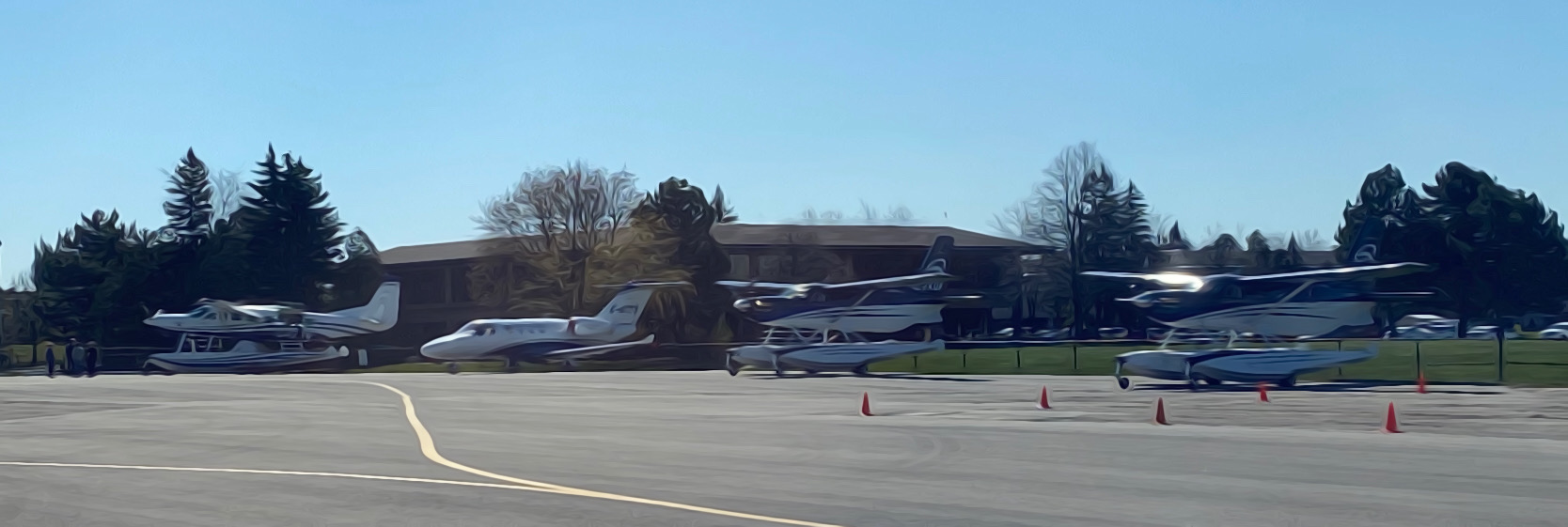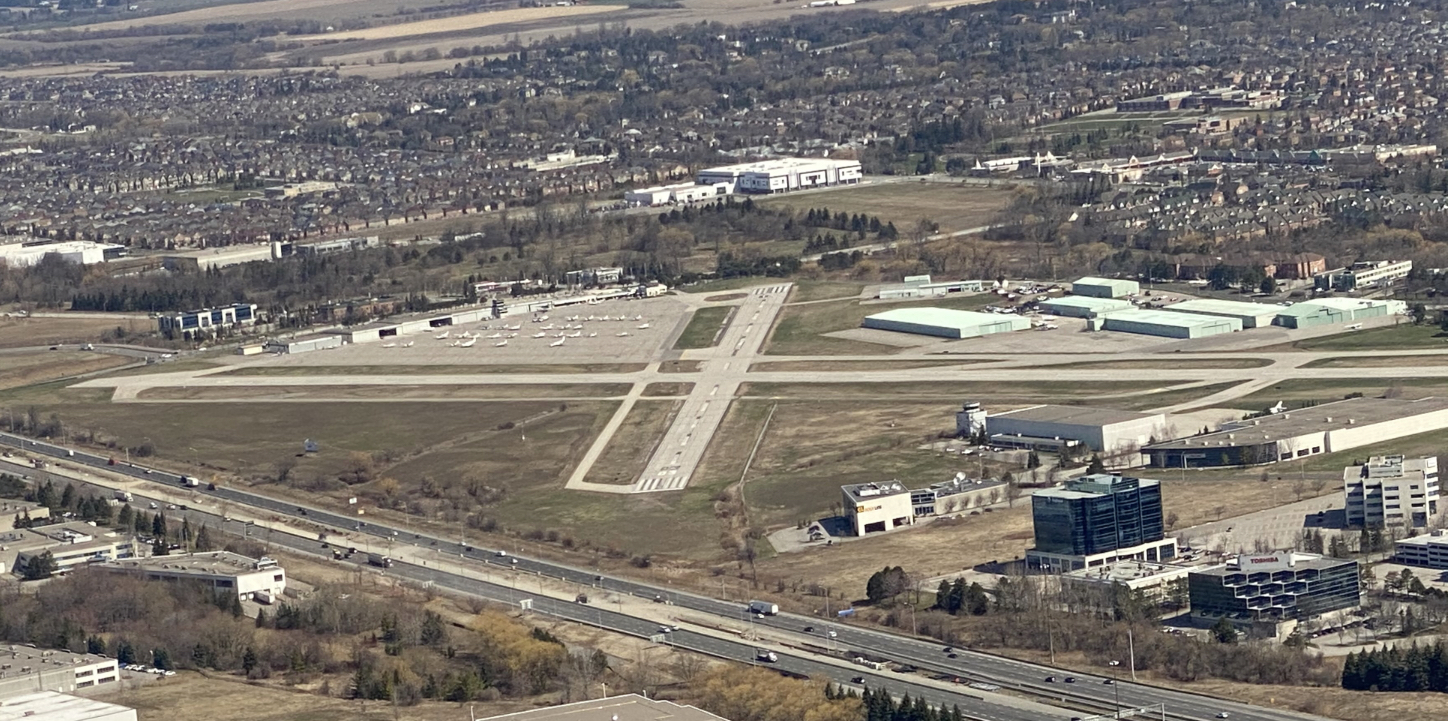By: Phil Lightstone, Mark Brooks
The havoc created by COVID-19 has affected all elements of the Canadian economy. While many Canadians languish in self-imposed isolation, the Canadian economy has slowed down. The pre-pandemic shutdown of a major employer, the General Motors plant, has made Durham region especially vulnerable. But Durham can have a unique solution to restarting its economy — a new utility airport as suggested by a recently released report from KPMG.

A new utility airport would support small to medium size businesses and entrepreneurs. Statistics from the Conference Board of Canada shows that Small– to Medium-sized Enterprises (SME), are the major contributor to the Canadian economy. As an aggregator, small businesses (1-99 employees) represent 54.2% of our nations GDP. In 2017, these businesses employed 8.3 million individuals in Canada, 69.7% of the total private labor force. By comparison, medium-sized businesses (100-499 employees) employed 2.4 million people (19.9%) and large businesses employed 1.2 million people (10.4%). In total, SMEs employed 89.6% (10.7 million) of the private sector workforce, highlighting the important role SMEs play in employing Canadians.
The majority of Business and utility aviation aircraft are owned by SMEs. They play an important role in facilitating transportation of service, specialist employees and executives to further their business initiatives and operations in Canada and abroad. Business aviation helps to improve worker productivity, customer service and retention, and also enhances supply chain performance in every province and territory in Canada. Canada is home to a number of aerospace manufacturing firms that manufacture and support the building of business aviation aircraft for use in Canada and abroad. As such, the industry is a major contributor of direct employment and in 2017 generated $13.23 billion in direct economic output.
There are an estimated 1,900 Business Aviation aircraft and 32,200 General Aviation aircraft in operation in Canada. The industry generates an estimated 82,760 Full Time Employees (FTEs). Together, these employees earned approximately $6.08 billion in direct wages and salaries in 2017. Business and General Aviation operations and business aircraft manufacturing in Canada also contribute to government revenue in the form of taxes by the federal, provincial and local governments. Total taxes paid on an annual basis are estimated at nearly $900 million in 2017.
Ontario has about 18,000 pilots currently licensed, with the majority near Toronto. According to Transport Canada there are over 10,000 aircraft registered in Ontario and almost 4,000 in the ‘M’ and ‘L’ postal codes alone. Additionally, over 1,200 of those are registered in Toronto proper, or near the suburbs (i.e. Mississauga, Markham, Concord, etc.).
Canada is connected together by over 1,900 aerodromes. This includes 26 NAS airports (National Airport System) and 71 regional airports. Commercial passenger air service occurs at some of these but Business and General Aviation operate at all aerodrome locations. These facilitiesalso offer a number of important non-commercial aeronautical functions.

In the Greater Toronto Area, there are 8 airports (Pearson, Toronto City Centre, Buttonville, Downsview, Burlington, Markham, Oshawa, and Brampton). General Aviation is restricted from Pearson and Downsview, with very little capacity at Toronto City Centre (The Island) Airport, or at private aerodromes such as tiny Markham (owned by the Thomson Corporation). With the profitable but privately-owned Buttonville Municipal Airport’s closure in the not too distant future, hundreds of General and Business Aviation aircraft will be displaced.
This presents a great opportunity to following the suggestion of a multi-million-dollar Aviation Sector Analysis by KPMG. It suggests that it is time to build a new utility airport in Pickering as a stepping stone to a larger passenger airport. The new airport would provide an accessible, less crowded, alternative to Pearson International Airport.
Building a new utility airport in Pickering would preserve the hundreds of direct jobs (728 in 2017) and thousands of indirect jobs created by businesses now operating at Buttonville. According to a study by Malone Given Parsons Ltd, despite its aging infrastructure and small size, Buttonville adds a $100 million in economic activity to the local economy. A new utility airport in Pickering can replace Buttonville with a modern infrastructure that would be a stepping stone to a larger airport. This first step can grow into tens of thousands of jobs and billions of dollars in economic activity over time as passenger service is added.
Initially this would displace only some of the $4 million in annual farming products grown on the land by farmers leasing the airport lands from Transport Canada. Approximately 7,500 of the 9,000 acres set aside for the airport and its noise buffer can be farmed. This current farming activity creates very few jobs in comparison and farming wages are half of those in the aviation sector. Even when the airport opens the surrounding fields can be farmed efficiently.
Aviation is playing an important role with the movement of critical supplies and people. If we stay the course, we will win the war on COVID-19. Air travel will resume, albeit with new guidelines and improved health and screening standards. The Toronto region will remain as Canada’s economic epicenter. Toronto’s Lester B. Pearson International Airport will face capacity challenges. The need for the Pickering Airport will remain.
Moving forward with a new airport in Pickering will support small and medium businesses that are the heart of the Canadian economy. It will support the entrepreneurial spirit of private business and create confidence in our future. Our economic recovery will be created by the private sector supported by good infrastructure and governance. Moving forward with the airport now will help restart our economy and set Durham Region up at the front of that recovery. It is time to act.
KPMG report.. Would you happen to know the name of the folks responsible for those reports? Do not recall anyone taking ownership?
You (both) did meet with them did you not?
Publicly outing the names and roles of government consultants and employees is inappropriate, and in some cases illegal. It is to prevent badgering , belittling and influence peddling that have been corrupting decision making since the dawn of time.
If you really want to go down that road, try a freedom of information request, should be fun to see how far you get! It would also be a good test of our democracy.
Mark you are becoming a joke. How did I not know this would be your answer. An unsigned report. No responsibility…Platitudes you do not understand.
An unsigned report? Really? A interesting bit of misinformation/Misdirection Ivan. And yes you can always count on us to Respect the independence and neutrality of consultants, support fair and balanced reporting, and follow the rule of law.
Not saying I agree with this blog post, but Ivan, you don’t know what you’re talking about. Consulting firms’ reports are never signed by the individuals who work on them. It’s the firm itself that is putting its name on the report.
Wonderful. An anonymous supports an anonymous.. and with respect I do know what I am talking about. If you fly in airplanes, in this country particularly in S Ontario you have depended on that for many years in multiple ways.
Everything is done on a signature in aviation and every signature has a pedigree. Routes , airports, approaches, airplanes, crews licences, etc etc.
Accident?? …first thing that gets checked is the pedigree. Who signed what.
Anonymous.. crickets.. and Mark knows that. He’s just hiding.
KPMG ..Amateurs. .and wannabes and folks who listened to Mark and GTAA.
AA 79314. What‘s yours.